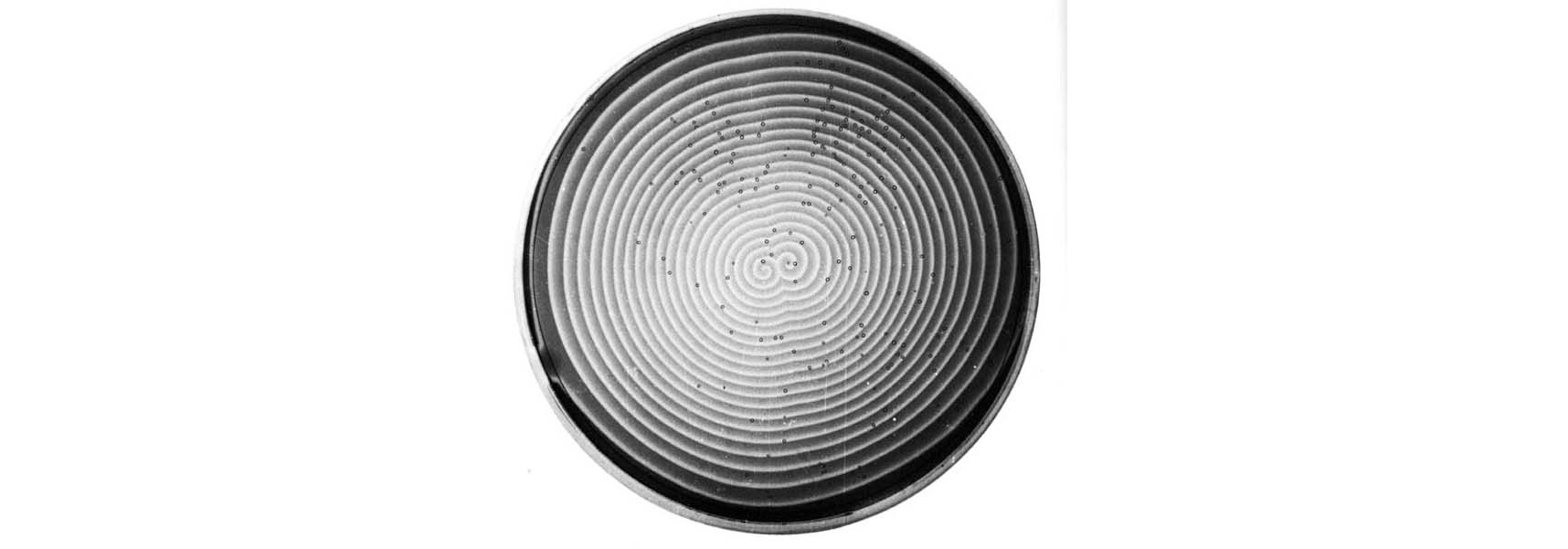Chemical reactions do not generally display dynamic patterns or spatial order. The Belousov-Zhabotinsky reaction, discovered in 1951, may be the first completely understandable laboratory example of pattern formation in a chemical system that involves nothing more than chemical reaction and molecular diffusion. That same year, in 1951, Alan Turing investigated the theoretical possibilities of pattern formation by reaction/diffusion as "The chemical basis of Morphogenesis." The B/Z reaction is an example of a chemical system that shows spatial, periodic and wave properties that suggests that morphogenetic self-organization might follow similar pathways in both inorganic and organic systems. (cf. Slime Mold)
from Arthur T. Winfree, When Time Breaks Down, p. 168
B/Z Reaction
